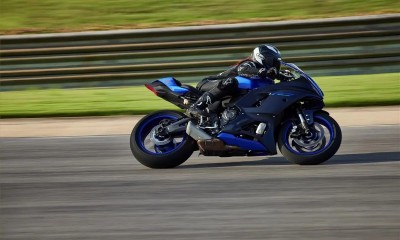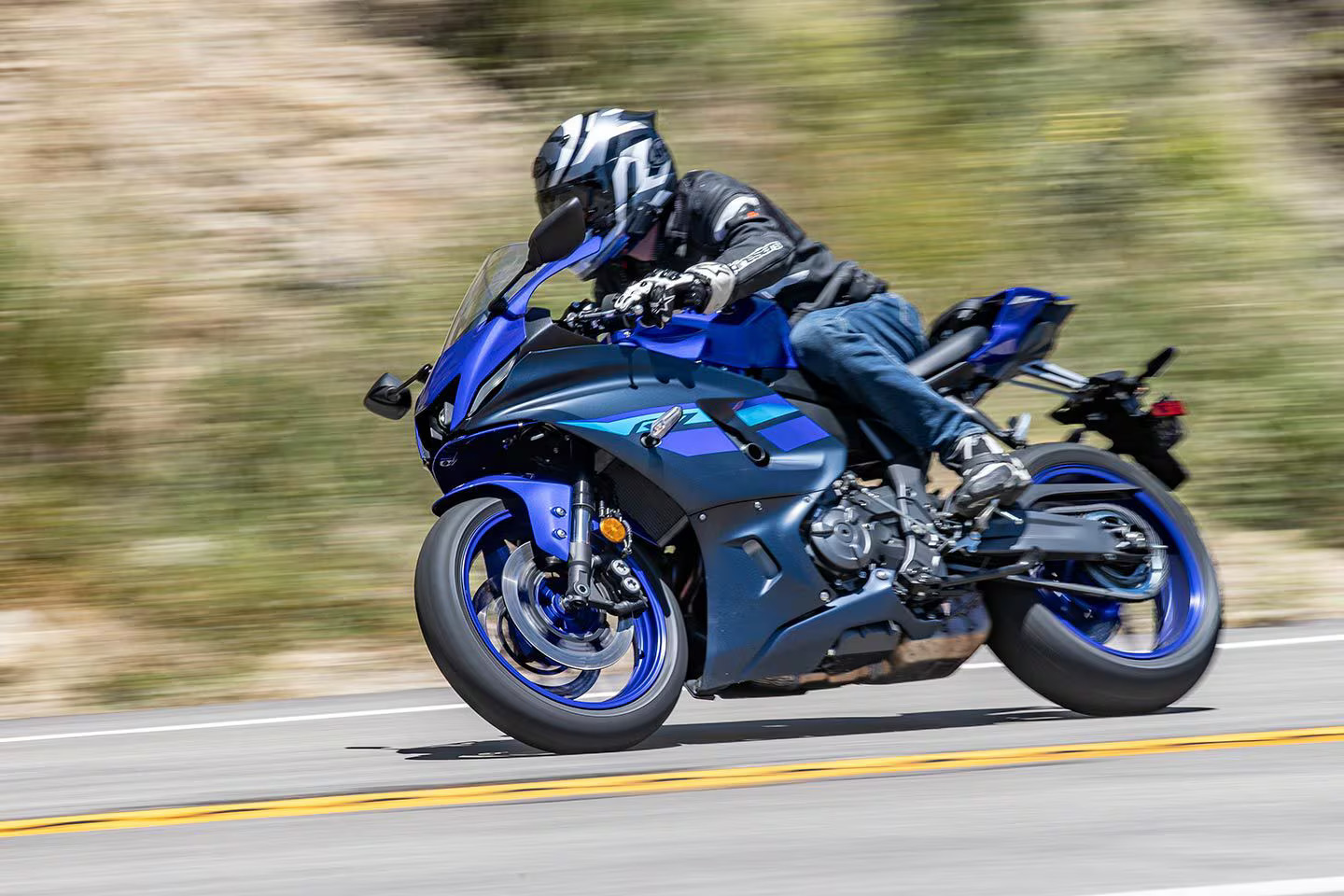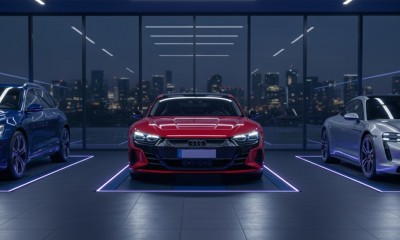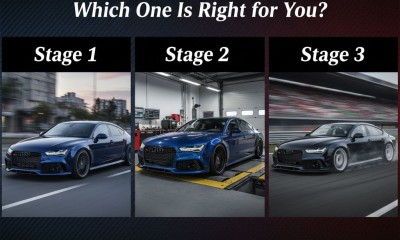Yamaha R7 Horsepower & Top Speed: A Complete Tuning Guide for 2025

The Yamaha YZF-R7, reintroduced for the 2022 model year, has carved a unique and vital space in the middleweight supersport category. It presents riders with a tantalizing proposition: a chassis endowed with race-bred DNA and premium components, paired with an engine celebrated for its real-world usability rather than outright peak power. This report provides a definitive, data-driven analysis of the R7's stock performance and explores its significant, often untapped, tuning potential. While its factory form offers an accessible and thrilling ride, the central question for enthusiasts and professional tuners remains: what is its true performance ceiling?
Crucial Clarification: The 2022+ CP2 vs. the 1999 OW-02 Superbike
Before delving into performance metrics, it is essential to address a common point of confusion. The modern R7 shares its name, but not its philosophy, with the legendary 1999 Yamaha YZF-R7, codenamed the OW-02. The original R7 was a limited-production homologation special, built with the singular purpose of winning the World Superbike Championship. It featured a 749cc inline-four engine, a sophisticated chassis with Öhlins suspension, and produced 106 hp in street trim, with race kits pushing output to 135 hp.
In stark contrast, the current R7 is a mass-market machine designed for accessibility and road-focused fun. It is built around Yamaha's proven 689cc parallel-twin CP2 engine, creating an entirely different class of motorcycle. Understanding this distinction is key to appreciating the modern R7's design goals and its unique potential for modification. 
The apparent conflict between the R7's aggressive, R-series aesthetics and its modest, street-oriented engine is not a design flaw but its greatest asset in the tuning market. The bike features a highly capable, confidence-inspiring chassis with components like fully adjustable 41mm KYB inverted forks, a Brembo radial front master cylinder, and the slimmest proportions of any R-series model, all designed for sharp handling. However, this advanced chassis is paired with the torque-focused CP2 engine from the MT-07 naked bike. This creates a platform with an exceptionally high performance ceiling. The core value of tuning the R7, therefore, is not just about adding horsepower; it is about resolving this engineered imbalance. Professional ECU recalibration allows the engine's output to finally match the chassis's capabilities, transforming the bike from a "sporty street bike" into the legitimate, sharp-edged "supersport experience" its design promises.
Read More: Nissan Patrol 2024 ECU Tuning
Yamaha R7 Stock Performance: A Data-Driven Analysis
To understand the R7's tuning potential, one must first establish a precise baseline of its factory performance. This involves looking beyond manufacturer claims to real-world, independently verified data.
Engine Deep Dive: The Heart of the Matter is Torque
The soul of the Yamaha R7 is its 689cc liquid-cooled, DOHC, 4-stroke, inline twin-cylinder engine, widely known as the CP2. Its defining feature is the 270-degree "crossplane concept" crankshaft. This design results in an uneven firing interval, which gives the engine a characterful V-twin-like pulse and, more importantly, delivers exceptionally linear torque for strong, predictable acceleration with minimal vibration. This torque-rich delivery is the primary reason the R7 feels so responsive and engaging on public roads, providing strong drive out of corners without needing to be revved to its limit.
Manufacturer Claims vs. Real-World Dyno Results
When discussing the Yamaha R7's horsepower, it is crucial to differentiate between figures measured at the crankshaft (as quoted by the manufacturer) and those measured at the rear wheel on a dynamometer (WHP).
Yamaha officially rates the R7's engine at 54.0 kW (73.4 PS or 72.4 bhp) at 8,750 rpm and 67.0 Nm of torque at 6,500 rpm. These figures, however, do not account for drivetrain loss—the power consumed by the transmission, chain drive, and other components before it reaches the pavement.
For a true measure of performance, we turn to independent dyno tests. These tests consistently place the stock R7's output lower:
-
Cycle World measured a 2024 model at 64.8 hp at 8,490 rpm and 44.5 lb-ft of torque at 6,520 rpm.
-
A separate Cycle World test on a 2022 model recorded 66.32 hp at 8,610 rpm and 45.72 lb-ft of torque at 6,380 rpm.
A stock Yamaha R7 produces approximately 73 horsepower at the crank, which translates to a real-world output of 65-68 horsepower at the rear wheel on a dynamometer. This ~10-12% reduction is standard for drivetrain loss and underscores why wheel horsepower (WHP) is the only metric that matters for performance tuning.
You May Like: Pontiac Grand Prix Tuning Guide L67 V6 LS4 V8 Performance
Table 1: Yamaha R7 Stock Performance Specifications
|
Specification |
Value |
|
Engine Type |
Liquid-cooled, 4-stroke, DOHC, inline twin-cylinder |
|
Displacement |
689cc |
|
Bore x Stroke |
80.0mm x 68.6mm |
|
Compression Ratio |
11.5:1 |
|
Claimed Crank HP |
54.0 kW (73.4 PS / 72.4 bhp) @ 8,750 rpm |
|
Claimed Crank Torque |
67.0 Nm (49.4 lb-ft) @ 6,500 rpm |
|
Verified Wheel HP |
~65-68 WHP @ ~8,600 rpm |
|
Verified Wheel Torque |
~45-46 WTQ @ ~6,400 rpm |
|
Wet Weight |
414 lbs (188 kg) |
On-Road Dynamics: How Fast is the R7?
With its modest horsepower, the R7 relies on its lightweight chassis, slim aerodynamics, and torquey engine to deliver its performance.
-
Top Speed: Under ideal conditions, a stock Yamaha R7 can achieve a true top speed of around 139 mph (~224 km/h). However, this figure is highly dependent on factors like rider weight, aerodynamic tuck, and environmental conditions. Heavier riders or those facing a headwind may see top speeds closer to 125-130 mph.
-
Acceleration: The R7's strength is its off-the-line and mid-range acceleration. Thanks to its flat torque curve, it is surprisingly quick. Verified tests show it can achieve:
-
0-60 mph in approximately 3.27 seconds.
-
A quarter-mile time of around 11.64 seconds at 116 mph.
-
This performance puts it well ahead of competitors like the Kawasaki Ninja 650 but slightly behind more powerful bikes like the Aprilia RS 660.
Read More: Best Chiptuning Software 2025
The Performance Ceiling: Uncovering the R7's Factory Limitations
The R7's stock performance figures are not a reflection of the CP2 engine's absolute limit, but rather a carefully engineered compromise. The Engine Control Unit (ECU) is conservatively calibrated from the factory to meet a complex web of global requirements.
The Role of the Stock ECU
The stock ECU map is designed primarily to ensure the motorcycle complies with strict emissions standards like Euro 5, as well as noise regulations and durability targets across a wide range of fuel qualities and operating conditions. Peak performance is a secondary consideration.
Built-in Restrictions
This conservative approach results in several programmed limitations that create a performance ceiling:
-
Conservative Ignition Timing: The timing is often retarded from optimal to prevent engine knock (detonation) when using lower-octane fuels, sacrificing power for safety.
-
Sub-Optimal Fueling: The air-fuel ratio (AFR) is often set rich in certain throttle and RPM ranges to help cool the engine and catalytic converter, which can dull throttle response and waste fuel.
-
Throttle-by-Wire Limits: The ride-by-wire system may not open the throttle plates to 100% in lower gears, even if the rider's wrist is at full twist, to soften power delivery.
-
Deceleration Fuel Cut: To reduce emissions, the ECU aggressively cuts fuel supply during deceleration. This is the primary cause of the abrupt and often criticized engine braking characteristics of the stock bike.
Hardware Bottlenecks
While the R7's chassis is ready for the track, its stock intake and exhaust systems are designed for quiet operation and emissions compliance, not maximum airflow. The catalytic converter, muffler baffling, and airbox design all create physical restrictions. This is why simply installing an aftermarket exhaust without an ECU tune often leads to poor performance, as the engine's fueling is no longer matched to the new airflow characteristics, creating lean or rich conditions that can harm the engine.
Unleashing the CP2 Engine: A Professional Guide to R7 Tuning
To bypass the factory limitations and unlock the R7's true potential, professional ECU remapping is essential. By directly modifying the software that controls the engine, a tuner can optimize performance for specific hardware and fuel, transforming the bike's character. For more information on our custom file services, visit our chiptuning files page.
The Science of ECU Remapping
ECU remapping, or "flashing," involves connecting to the motorcycle's ECU and altering its internal data maps. A professional tuner modifies key parameters to achieve a specific performance goal. These parameters include:
-
Fuel Maps (IAP & TPS): Adjusting the amount of fuel injected based on intake air pressure and throttle position to achieve the optimal air-fuel ratio for power and efficiency.
-
Ignition Timing Maps: Advancing the ignition timing to create peak cylinder pressure at the ideal moment for maximum power output.
-
Throttle Maps: Removing restrictions to ensure a direct, 1-to-1 response between the rider's input and the engine's output.
-
Rev Limiters & Fan Temps: Adjusting the rev limit for a wider powerband and lowering the activation temperature for the cooling fan to better manage heat.
Stage 1 Tuning: The Essential First Step for Every R7 Owner
A Stage 1 tune is a custom ECU file designed for a mechanically stock R7 or one fitted with an aftermarket full exhaust system. No internal engine modifications are required.
While a Stage 1 tune offers a modest peak power gain, its primary value lies in the dramatic improvements to rideability, responsiveness, and engine safety.
-
Corrected Fueling: It is the single most important modification after installing a new exhaust. The tune corrects the air-fuel ratio, eliminating the dangerous lean conditions caused by a free-flowing system and ensuring optimal combustion.
-
Sharper Throttle Response: The remap provides a crisp, direct connection between the throttle and the rear wheel, making the bike feel more intuitive and responsive.
-
Smoother Power Delivery: By eliminating factory dips in the power curve, the engine delivers power more linearly and predictably.
-
Reduced Engine Braking: Disabling the aggressive deceleration fuel cut makes the bike significantly smoother on corner entry and during on-off throttle transitions in traffic.
On a dynamometer, a well-executed Stage 1 tune on an R7 with a full exhaust system typically yields a 2-5% increase in power and torque, translating to real-world gains of 2-4 WHP and 2-3 WTQ.
Read More: Toyota GR GT3 ECU Performance Guide
Stage 2 Tuning: Maximizing Hardware for the Track and Street
A Stage 2 tune is a more aggressive calibration that is specifically designed for and requires supporting hardware modifications. This means a full performance exhaust system and a high-flow air intake or a modified airbox are mandatory to see the benefits.
This is where the R7 truly awakens. By allowing the engine to breathe in and out with maximum efficiency, a Stage 2 tune can make significant adjustments to fueling and timing to capitalize on the vastly improved airflow. The result is a complete transformation of the bike's performance. Data from professional tuners shows that a proper Stage 2 setup can yield gains of up to 12.5% in peak power and torque, with some claiming increases of up to 21% at the top of the rev range compared to a completely stock bike. This can push the R7's output to
75-80 WHP, placing it in an entirely new performance category that finally does justice to its supersport chassis.
Table 2: Yamaha R7 Tuning Stages & Performance Gains
|
Tuning Stage |
Required Hardware |
Key ECU Adjustments |
Expected Peak WHP |
Expected Peak WTQ |
|
Stock |
OEM Exhaust & Air Filter |
Factory Calibration |
~65-68 hp |
~45-46 lb-ft |
|
Stage 1 |
Stock or Full Exhaust System |
Optimized Fuel & Ignition, Decel Cut Disabled, Rev Limiter Increase |
~68-72 hp |
~47-49 lb-ft |
|
Stage 2 |
Full Exhaust System & High-Flow Air Intake/Airbox |
Aggressive Fuel & Ignition Maps for Increased Airflow |
~75-80 hp |
~50-52 lb-ft |
Ready to transform your R7? Explore our dyno-proven tuning files to find the perfect solution for your setup.
The HP Chiptuningfiles Advantage: Precision for Professionals
For tuning workshops, motorcycle dealerships, and race teams, partnering with a reliable file provider is paramount. At HP Chiptuningfiles, we provide the tools and support necessary for professional success.
For Workshops and Dealers
Our B2B platform is designed to streamline your tuning operations and deliver consistent, high-quality results for your clients.
-
Vast Database: Gain immediate access to our extensive tuning file database, which contains thousands of dyno-tested files for a wide range of vehicles and hardware configurations.
-
Quality and Reliability: We deliver custom-developed, dyno-verified tuning files. This commitment to quality ensures safe, reliable, and repeatable performance gains for every vehicle you service.
-
Efficient Workflow: Our straightforward, credit-based pricing structure and fast file delivery service allow you to maximize your workshop's efficiency and profitability.
-
Dedicated Support: Our team of expert engineers is available to provide technical support for any custom requests or troubleshooting needs. Learn more about us on our about us page.
A Complete Tuning Ecosystem
HP Chiptuningfiles is more than just a file service. We are a complete partner for your tuning business, offering professional-grade tuning hardware, including master and slave tools from industry leaders like Alientech and Autotuner. This makes us a true one-stop shop for all your professional tuning needs.
Elevate your workshop's capabilities.(https://hp-chiptuningfiles.com/b2b) to access industry-leading tuning files and dedicated support.
Frequently Asked Questions (FAQ)
What is the real horsepower of a Yamaha R7?
A stock Yamaha R7 produces 72-74 horsepower at the engine's crankshaft. On a dynamometer, this translates to approximately 65-68 horsepower at the rear wheel due to drivetrain losses.
How fast can a Yamaha R7 really go?
A stock Yamaha R7 has a top speed of approximately 139 mph (224 km/h). With a Stage 1 ECU tune and performance exhaust, riders report speeds of 145-150 mph on the speedometer, though this is heavily dependent on rider weight and conditions.
Is ECU tuning a Yamaha R7 worth it?
Yes. ECU tuning is the most effective way to unlock the R7's true potential. A Stage 1 tune is essential for bikes with an aftermarket exhaust to ensure engine safety and improve rideability. A Stage 2 tune can increase wheel horsepower by over 12%, transforming the bike's performance to match its supersport chassis.
What mods are needed for a Stage 2 R7 tune?
A Stage 2 tune requires a full system performance exhaust (e.g., from Akrapovič or Yoshimura) and a high-flow air intake system or modified airbox to maximize airflow. The ECU remap is then calibrated specifically for these hardware upgrades.
Conclusion: From Capable Street Bike to True Supersport
The Yamaha YZF-R7 is, without question, a brilliant motorcycle platform straight from the factory. It offers an engaging ride, a world-class chassis, and an accessible entry point into the world of supersport styling. However, its performance is deliberately constrained by conservative factory calibrations designed to meet global regulations.
The key to unlocking the machine's full potential lies within its ECU. Professional ECU tuning is the definitive step that bridges the gap between the R7's capable chassis and its modest engine. A simple Stage 1 remap corrects fueling for aftermarket parts and dramatically improves rideability, while a comprehensive Stage 2 tune transforms the R7 into a genuinely potent track and road weapon. It is through this precise recalibration that the engine's hidden power is released, resolving the bike's engineered identity crisis and delivering the thrilling, sharp, and responsive supersport experience that the iconic R-series name implies.
Don't leave performance on the table. Create your account today and discover the ultimate tuning solution for the Yamaha R7. For any questions, please contact us.
Other news and updates

Read more OBD Breakthrough: Tuning Support for the Continental ASG1 ECU in Audi e-tron & Porsche Taycan
The Continental ASG1 ECU used in the Audi e-tron and Porsche Taycan is now fully supported for OBD read/write. This breakthrough allows safe tuning of torque limits, current maps, thermal strategies and pedal response, enabling measurable performance gains whi...
Read more

Read more Stage 1, Stage 2, and Stage 3 Tuning: Which One Is Right for You? | HP Chiptuning Files Europe & UK
Discover the differences between Stage 1, Stage 2, and Stage 3 tuning. Learn which remap is best for your car, driving style, and budget at hp-chiptuningfiles.com.
Read more

Read more Mercedes-AMG G63 2025: ECU Remap & Performance Boost
Hey, we are HP Chiptuningfiles – Europe’s leading ECU tuning file service provider. We deliver custom, dyno-tested tuning files for diesel, petrol & hybrid engines, trusted by 4,000+ clients worldwide. The 2025 Mercedes-AMG G63 combines iconic G-Class ruggedne...
Read more